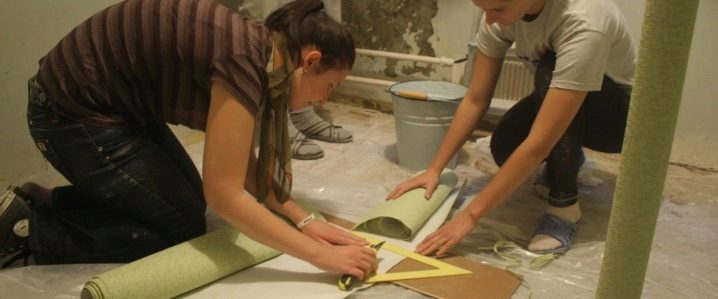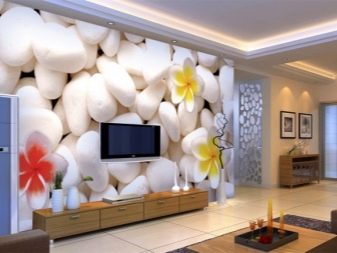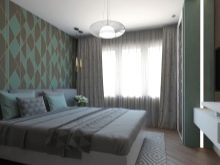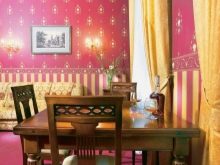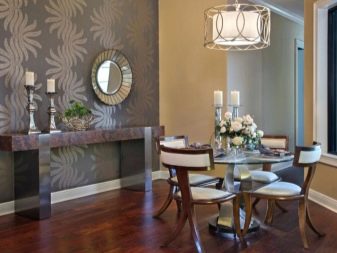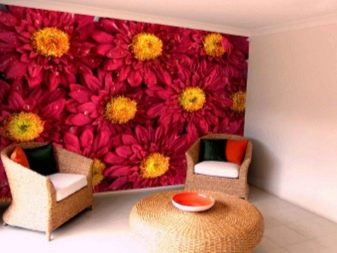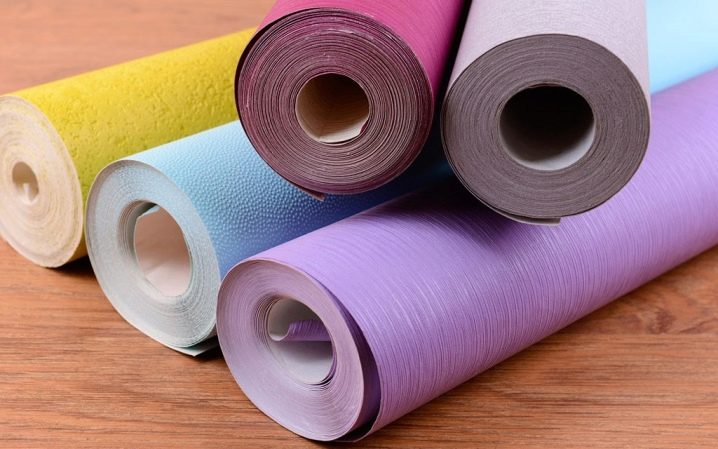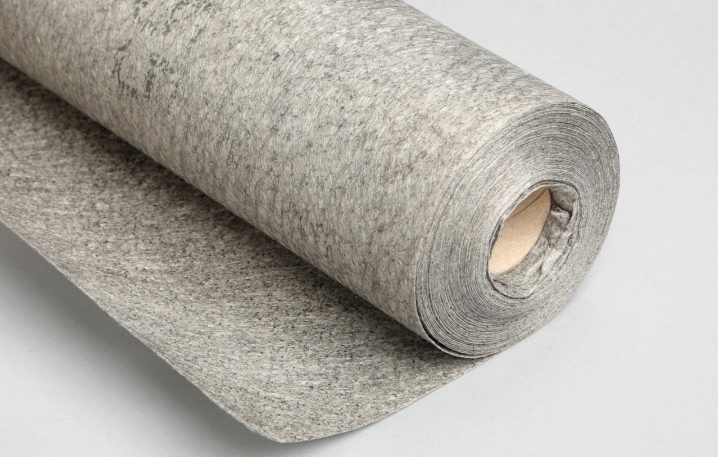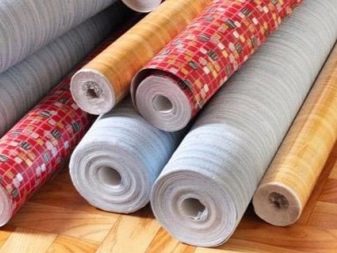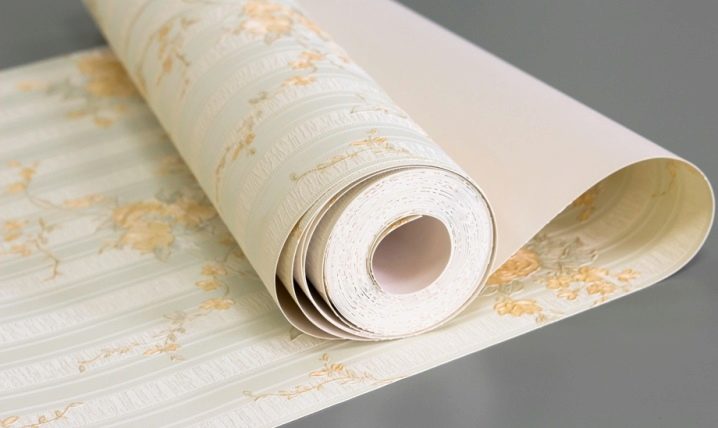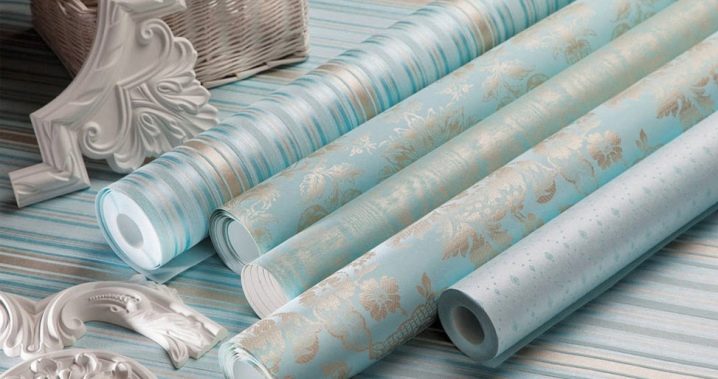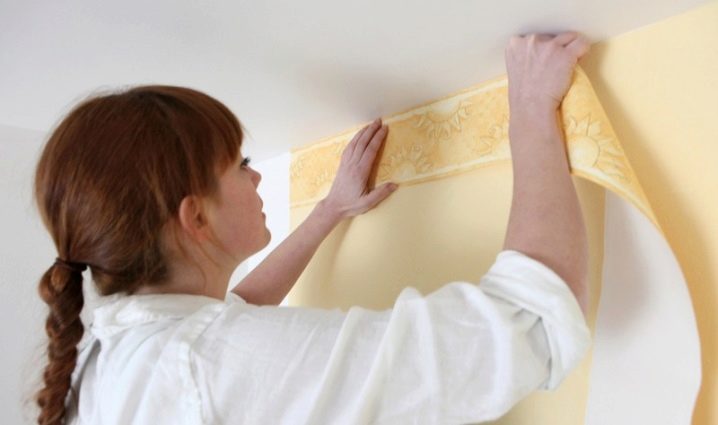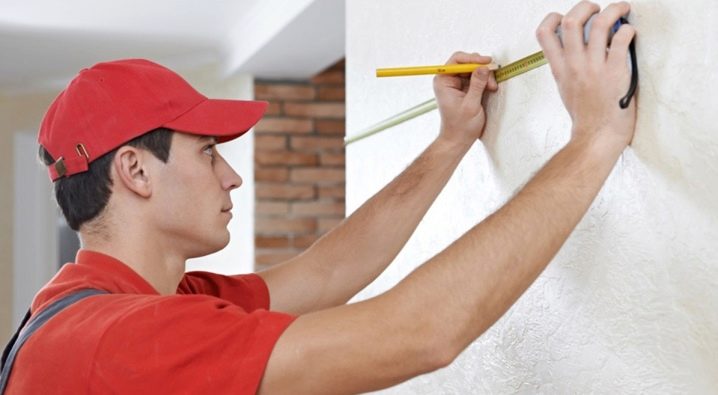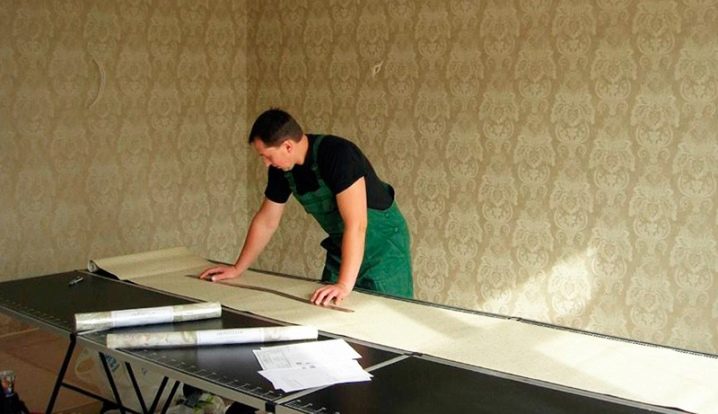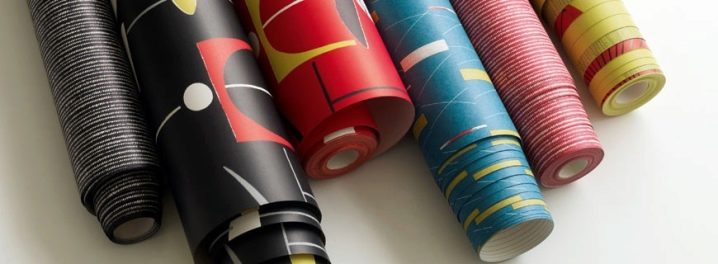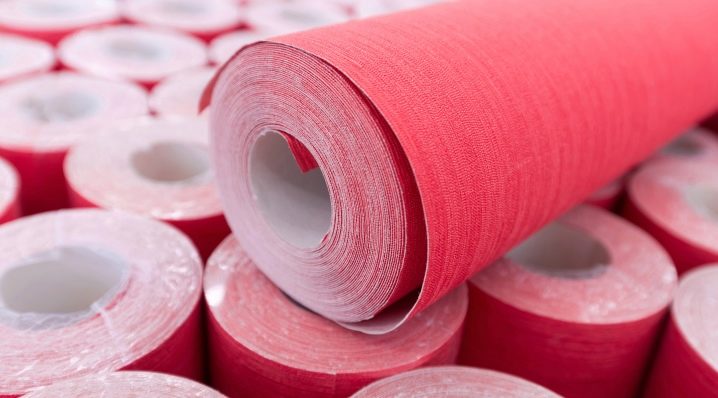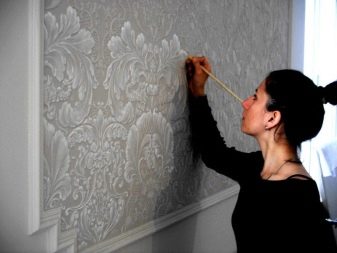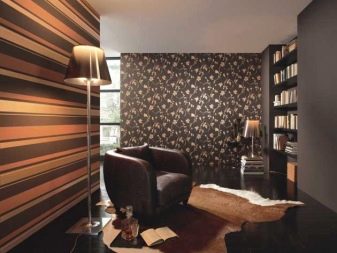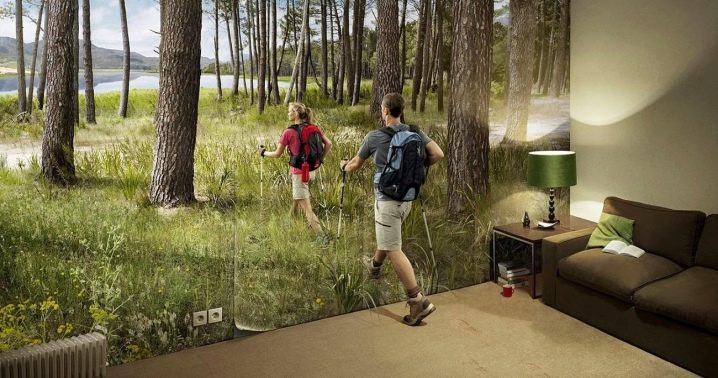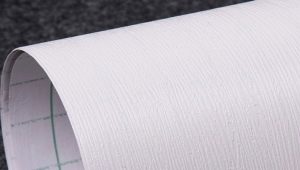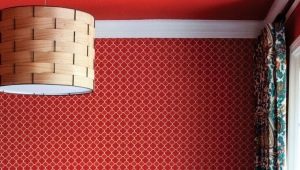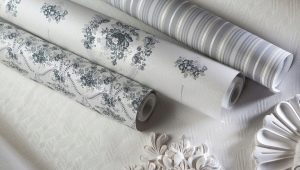Wallpaper sizes in the roll - we count correctly
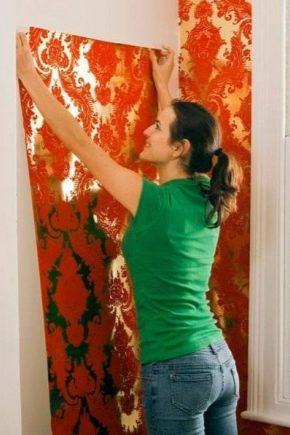
Starting any repairs yourself, you need to correctly calculate the amount of material needed. This applies to everything, including wallpaper.
Even in such a variety of wallpaper there are some standards for the length and width of paintings. Therefore, in order to correctly calculate the footage and not buy too much, you need to know the length and height of the walls, as well as the width of the wallpaper and their number in a roll.
Types of coverage
There are the following types:
- From paper - the thinnest and least durable type of coating;
- Flizelinovye - consist of compressed fibers;
- Textile - silk or felt material;
- Vinyl - their main plus - impregnation from a fungus;
- Velor - the top layer consists of villi, the bottom - a paper base;
- Metal - often have an imitation of gold or silver patterns;
- Glass fiber - made of fiberglass. This type of wallpaper is prepared for painting and it has some features, such as fire resistance, the inability to pass air and high strength.
Standard parameters
Wall-paper is packed up in the rolls reminding thick-walled tubes. Standard parameters are considered the most popular dimensions for 1 roll. Such wallpaper is in every hardware store.
Length
The usual and most popular is a ten-meter roll. Most manufacturers make rolls of exactly that length. But there are other options. For example, a length of 15 meters is used for narrow vinyl (50 cm) wallpaper. The length of 25 meters is used for meter non-woven wallpaper.
Such long rolls are used for pasting large rooms and halls.
They are rarely used in residential areas because of their length or weight, because such a roll is five times heavier than the standard one.
Width
The width of the wallpaper can be divided into three most common sizes:
- 50 cm;
- 70 cm;
- 106 cm
Often the width varies from the country of origin. For example, a width of 70 cm came to Russia from European countries (Germany, France and Holland).Since foreign building materials are considered to be of high quality, wallpapers from these three countries quickly began to gain popularity. Such wallpapers are often used for horizontal sticking and creating a unique interior. The price for them is much higher than for domestic ones, but it does not bother many.
In Russia, standard sizes are 1 m and 0.5 m. Width 50 cm is the most popular. The convenience of such a width lies in the fact that a person alone is able to paste over the entire room, as often the roll is very light. They are also easy to smooth.
Popularity is gaining a wide format of wallpaper - 106 cm. Wallpaper is often more expensive than narrow counterparts, but their main advantage is that the decorative layer is applied not to paper, but to non-woven base. This base gives the canvas stiffness and glues without bubbles.
This width allows you to paste over the room almost seamlessly. But such wallpaper is hard to glue alone because of their weight.
Weight
When calculating the weight of the material, it is important to know that there are several types of wallpaper:
- Lungs have a density of 40 grams per square meter. A standard narrow roll will weigh about 500 grams;
- Non-woven wallpapers can withstand their weight and have a density twice as high as lightweight counterparts - the roll weighs a kilogram;
- Multi-layered vinyl wallpapers are of such density that it is very difficult to tear them - 130 grams per square meter. The weight of the roll exceeds 1.5 kg.
Determine the top of the roll
When pasting wallpaper, you must choose the right top of the wallpaper. In each roll, the upper one, which is also the initial end, is located outside. All manufacturers strive to do so for convenience so that when working there is no need to unwind the entire roll.
At the beginning of work, the top of the roll is applied to the ceiling and begins to measure the desired length.
How many need for walls?
The main process of any work is metering. And the calculation of material for the walls also requires careful measurements. Firstly, measure the length of the room, the width and height of the room. You should also measure the length and width of all door and window openings, as they are not glued wallpaper.
After all sizes are obtained, you can proceed to the calculation of the required number of wallpapers. It is best to have either a record of all sizes, or a sketch of the walls with a detailed description of the height and width, as well as the location of the door and windows with their sizes.
Instructions for calculating and determining the number of rolls looks like this:
- The perimeter of the room is divided by the width of the canvas.The solution will be the number of strips, which is enough for full pasting walls;
- Then we divide the length of the wallpaper in the roll by the height of the room, which will allow you to determine how many pieces will be released from one roll;
- After these two calculations, you can calculate how many rolls you will need in the room. To do this, divide the number of strips by the number of strips from one roll.
So it turns out that the amount of material that is necessary for the full pasting of the room with window and door openings. You can measure and calculate their area, subtract it from the total and get exactly the area of the walls.
But You should not save on the amount of material. You should always take the material with a margin, especially if the wallpaper is inexpensive. It is also worth taking stock due to the fact that the same wallpaper, even from different batches, can be of different shades, and during the operation there can be anything, especially if there are small children or animals in the house.
Also, when calculating the required amount of material you need to know whether there is a fit pattern or pattern. If there is, then this adjustment must be taken into account and increase the number of rolls. There is a free docking pattern when adjusting is not required,and three types of fit: straight, offset and counter.
Special attention should be paid wallpaper for painting with a clearly defined relief. Due to the complexity of the pattern, the presence of stripes, squares, rectangles and the difficulty of fitting it is difficult to calculate the required amount of wallpaper. These wallpapers look massive, but in fact they are light, as they are vinyl. Therefore, the main difficulty will be to count the number of such wallpapers, rather than sticking them. Consumption in non-rectangular rooms, in rooms with niches and projections, is also increasing.
For clarity, we give you an example of calculations:
- Take a room width of 3 and a length of 4 meters. The ceiling height is 250 cm. The doorway has parameters of 80 cm x 210 cm. The window aperture is 120 cm x 150 cm. The width of the wallpaper web is 60 cm. The length of the roll is 10.5 m.
- To begin with, we define the perimeter of the room: 3 * 2 + 4 * 2 = 12 meters.
- Then calculate the number of lanes for full vertical pasting of the room: 12 / 0.6 = 20 lanes.
- From one roll we get 4 pieces 250 cm long with an allowance of 10 cm.
- In the end, we consider how many packages you need: 20/4 = 5. As a result, 5 rolls are obtained for pasting this room.
Window and doorway can not calculate and subtract, because their area is small and does not play a significant role.
Separately, it should be said about horizontal wallpaper glueing.The calculation is approximately the same, only the number of strips on the wall will depend on the height of the room, and the length of the sheet will match the length of the room.
To glue the wallpaper in this way must be extremely careful, otherwise all the seams and joints will be visible.
You can also highlight such types of wallpaper as photo wallpaper or 3D. Their transportation requires special attention. They are produced in small rolls and often have a certain size pattern. Therefore, it is quite possible to calculate their fitting so that the drawing is on the entire wall and is not torn off.
On how to glue flizilinovye wallpaper, you can find out in the next video.
